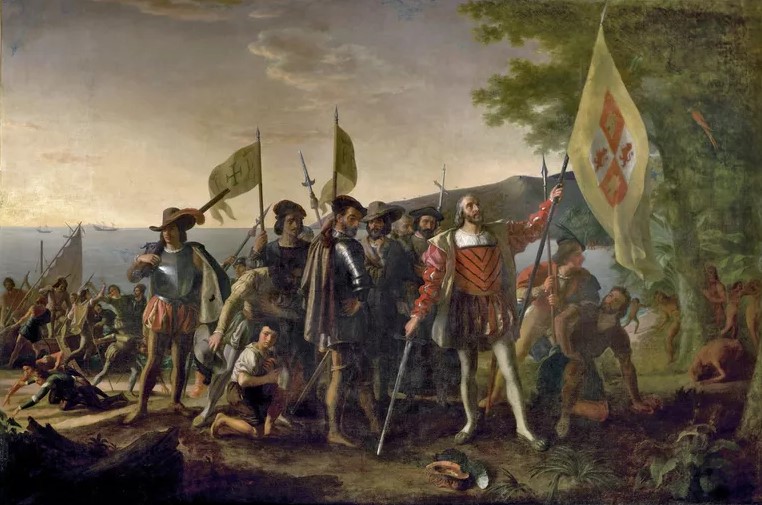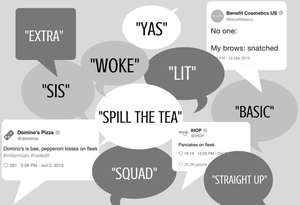
Hispanics Can Also Be Racist - Here's Why
This summer has seen a lot more political and economic tension than ever before in most of our lifetimes. Racism has always been a point of discussion in the United States, especially in a post-Civil Rights Movement era.
However, growing up in South Florida has always gotten me to wonder how racism is handled in other parts of the world, specifically in Latin America.
Perhaps we should start with some history for context. In the early 16th century, the conquistadors landed in the Americas, following Columbus. Their expeditions were pure conquest -- finding land and resources for Spain. Their foreign germs murdered 90% of the native populations and what was left were either chased off, converted to Christianity, enslaved by the Spanish, or a combination of any of these. This could be where racism in Latin America truly started, but there is a key difference: the Spanish conquered for the sake of conquering. The argument could be made that there was hardly real racial motivation for colonizing the Americas, but the argument can be made for the opposite. However, by 1502, African slaves were already in the Caribbean.
This is, arguably, where the true racism began in colonial Latin America.
While indigenous people were enslaved due to conquest, African slaves were a part of the Trans-Atlantic trade system -- also famously called the Colombian Exchange -- and so now the conquistadors found themselves with a question: What will the social hierarchy be? You have ethnocentric Europeans with two different kinds of enslaved peoples. The casta system that the Spanish developed was as follows, roughly: with the peninsulares at the top (white Europeans from the Iberian peninsula), creoles just under (white Europeans born in the Americas), mestizos and mulattos, followed by indigenous people, and then black slaves all the way at the bottom -- because to the white conquistador, enslaved Africans were lesser than everyone. This was due to a combination of the notion of blood purity and racial segregation.
This system of both political, economic, and social hierarchy is most probably the reason for modern-day racism in Latin America. Unlike in the United States, racism in Latin America is based on social and economic class. This may sound similar to racism in the U.S., but in Latin America: if you’re poor, then you’re black. In the United States, racism is often the opposite: if you’re black, then you must be poor. According to an article from the American Quarterly, “As early as 1944, Alejandro Lipschutz, a Chilean anthropologist, coined the idea of Latin America as a ‘pigmentocracy’ -- where the region’s social hierarchies are ethnic or color-based. However, that idea was largely ignored until recently, when research using new census data on racial identification began to document racial inequalities. These studies generally show that Afro-descendant and Indigenous people occupy the lowest rungs on the income, educational and occupational ladders across Latin America.” But because Latin America as a whole is not the wealthiest of continents, funding and money are often pushed towards other projects.
The social aspect of it is also a factor because while in the United States, “negro” is compared to the n-word, but in Latin America, it is used a fond version of “homie” for people with darker skin. To us in the U.S., this appears to be racist. But in Latin America, oftentimes it’s not used as such. Its connotations depend entirely on the context. “Negrita(/o)” is used as a fond pet name for friends or family with dark skin, even if they’re not black. At the same time, it can be used as a slur as bad as the n-word when thrown around with hate behind it.
Because of all of this, racism is often overlooked.
However, now this poses the question: how does this racism manifest itself in immigrants who come to the United States? It’s quite an interesting phenomena because here, Hispanics are no longer the majority; they’re the minority. Here in the U.S., they are often greeted with racism towards them, so why are some Hispanics still racist towards other minorities? By all logic, they shouldn’t.
They’re on the same level as them; they’re all facing the same racism and oppression. So, why?
The answer is very complicated. For one, there is the notion of a sort of “protection.” Latinos are often encouraged to either marry people who are lighter skin than them or marry white people. Marrying lighter skin people has the connotations that you marry rich and that you’re gaining more “protection” from racism. It’s a practice of erasing culture and heritage for the sake of wanting -- what some would call -- a better life. This is the same reason why some Hispanics parents refuse to teach Spanish to their kids -- so that those kids don’t get picked on or have to experience racism like their parents did.
There is also, however, a paradoxical feeling of superiority that leads to racism towards other minorities. This is mainly rooted in stereotypes portrayed in the United States that Hispanics families sometimes believe, such as how black people are called “thugs.” This reinforces the classist racism of Latin America, so the line between “poor therefore black” and “black therefore poor” is extremely blurred.
So hopefully this has provided some insight on how racism manifests itself in different parts of the world, but also how it manifests itself when it is in the United States.
Citations
https://study.com/academy/lesson/the-spanish-casta-system-definition-significance.html
https://nativeheritageproject.com/2013/06/15/las-castas-spanish-racial-classifications/
https://www.americasquarterly.org/article/the-effects-of-skin-color-in-the-americas/

































Comments